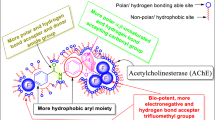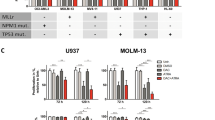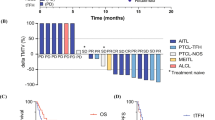Abstract
There is increasing experimental evidence to suggest that expression of O6-alkylguanine-DNA-alkyltransferase (ATase) is a major factor in resistance to dacarbazine (DTIC). We recently demonstrated a progressive ATase depletion in human peripheral lymphocytes with nadir levels occurring at 4-6 h after DTIC administration (Lee et al., 1991). Therefore in an attempt to improve the clinical response rate of DTIC, fotemustine was administered 4 h after DTIC administration; since in the case of fotemustine, ATase removes the chloroethyl lesions from the O6-position of guanine, thereby preventing the formation of the cytotoxic cross-links. Sixty patients with widely metastatic melanoma received DTIC at 400, 500 or 800 mg m-2 followed by fotemustine (100 mg m-1) at 4 h after DTIC administration. Treatment was repeated every 28 days with a total of 169 cycles of chemotherapy administered; 75, 57 and 37 treatment cycles with 400, 500 and 800 mg m-2 DTIC groups respectively. Eighteen of the 60 patients responded (with three complete response); response rates were linearly related to dose, being 24%, 30% and 40% in patients receiving 400, 500 and 800 mg m-2 of DTIC respectively and the overall response rate was 30%. Median survival was 3.6 months (range, 1-15 months) with no statistically significant difference between the different DTIC treatment groups (P = 0.67). Nine patients are alive at 5 to 26 months (median 10 months); three patients with no tumour and five patients with stable disease. A statistically significant relationship was seen between the development of severe haematological toxicity (WHO > or = 3) with increasing dosage of DTIC and significant subclinical pulmonary damage was seen in 11 patients where the lung function was monitored during the course of treatment. In conclusion, it appears that with this small group of patients, escalation of DTIC dosage might not significantly affect response rates but does increase haematological toxicity. The present study provides a framework for other studies in an attempt to modulate ATase-mediated drug resistance in tumour tissues but the associated toxicity will need careful monitoring.
This is a preview of subscription content, access via your institution
Access options
Subscribe to this journal
Receive 24 print issues and online access
$259.00 per year
only $10.79 per issue
Buy this article
- Purchase on SpringerLink
- Instant access to full article PDF
Prices may be subject to local taxes which are calculated during checkout
Similar content being viewed by others
Author information
Authors and Affiliations
Rights and permissions
About this article
Cite this article
Lee, S., Margison, G., Woodcock, A. et al. Sequential administration of varying doses of dacarbazine and fotemustine in advanced malignant melanoma. Br J Cancer 67, 1356–1360 (1993). https://doi.org/10.1038/bjc.1993.251
Issue date:
DOI: https://doi.org/10.1038/bjc.1993.251
This article is cited by
-
O6-methylguanine-DNA methyltransferase depletion and DNA damage in patients with melanoma treated with temozolomide alone or with lomeguatrib
British Journal of Cancer (2009)
-
Temozolomide in combination with fotemustine in patients with metastatic melanoma
Cancer Chemotherapy and Pharmacology (2008)
-
A Phase I/II study of lomustine and temozolomide in patients with cerebral metastases from malignant melanoma
British Journal of Cancer (2007)
-
Marked inactivation of O6-alkylguanine-DNA alkyltransferase activity with protracted temozolomide schedules
British Journal of Cancer (2003)
-
Systemic therapy of malignant melanoma
Medical Oncology (1997)



